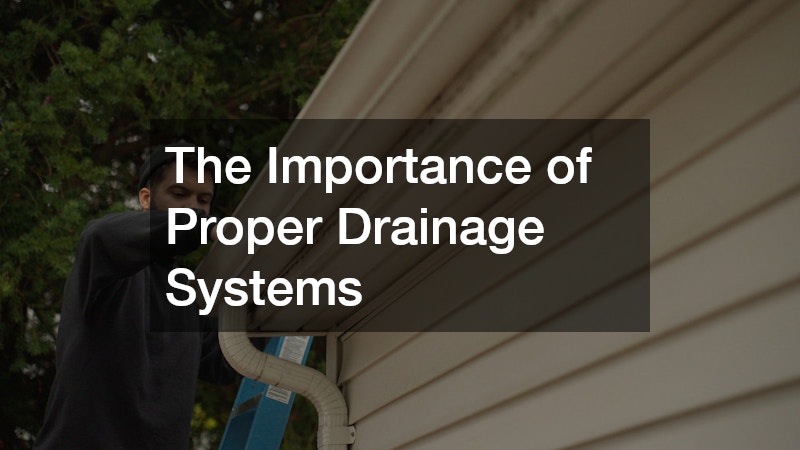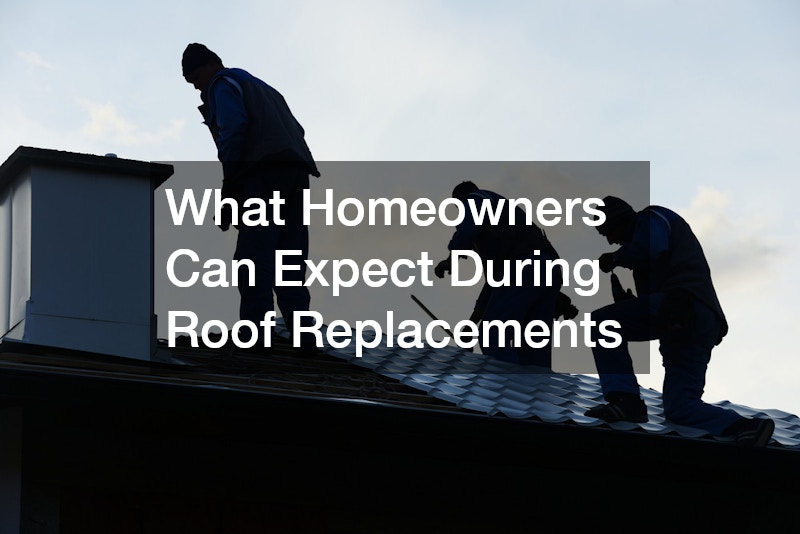-
Regular maintenance can extend your roof’s lifespan by decades.
-
Professional inspections twice a year can prevent 80% of major roof issues.
-
Choosing the right materials significantly influences durability and energy efficiency.
-
Sealcoating and coating technologies can reduce roof temperature by up to 50°F.
-
Clean gutters and proper drainage prevent foundation damage and leaks.
-
Timely repairs save thousands in long-term replacement costs.
-
Reliable local contractors ensure safety, quality, and post-installation support.
Introduction: A Smarter Approach to Roof Care
Roof care is an integral part of maintaining your home’s structural integrity, energy efficiency, and property value. A well-maintained roof acts as the first line of defense against the elements and helps to regulate indoor temperatures. Without proper roof care, your home could quickly lose value due to deterioration and increased energy costs.
Many homeowners tend to overlook roof maintenance until significant issues arise, such as leaks or visible damage. Regular inspections and timely maintenance can prevent costly repairs and extensive damage. This guide aims to educate readers about comprehensive roof care, covering everything from RV roofs to residential roofing replacements.
Understanding how to care for various types of roofs can extend their lifespans and save money in the long run. According to the National Roofing Contractors Association (NRCA), proper maintenance can extend a roof’s lifespan by up to 40%. We encourage you to incorporate seasonal inspections as part of your regular home maintenance routine to keep your roof in peak condition.
1: Understanding Roof Materials and Their Lifespan
Selecting the right roofing material is crucial for long-lasting roof care. Materials like asphalt shingles, metal, slate, and cedar shakes have different lifespans and maintenance requirements. Asphalt shingles are the most common, offering affordability and ease of installation, but they may not last as long as other materials. Metal roofs, on the other hand, can last up to 50 years with proper coating and care, while slate and tile options can exceed 75 years when installed correctly.
The environment and installation quality play significant roles in a roof’s longevity. Climate conditions, ventilation, and professional installation determine how well materials like metal and slate perform over time. Consulting a cedar shake residential roofer can provide expert insight into materials that need specialized care. Cedar shakes, while beautiful and natural, require periodic cleaning and treatments against moss and insect damage to maintain their strength.
Additional factors like insulation, attic ventilation, and slope angle affect overall durability. By selecting weather-appropriate materials and following manufacturer maintenance recommendations, homeowners can significantly improve roof performance.
Actionables:
-
Schedule annual inspections for older roofs.
-
Trim nearby trees to reduce moss and debris buildup.
-
Clean gutters regularly to prevent water pooling.
-
Keep a record of installation and service dates for easier tracking.
#2: Keeping Mobile Roofing Systems in Top Shape
Maintaining RV roofs requires distinct strategies compared to residential roofs. Regular cleaning and sealing practices help keep mobile roofing systems in optimal condition. Whether you’re dealing with an RV or a camper, ensuring their surfaces are clean and well-sealed is vital to prevent leaks and damage caused by travel vibrations and road exposure.
Natural elements, such as UV rays, rain, and fluctuating temperatures, can dramatically affect rv roofs. Therefore, applying UV-resistant coatings and flexible sealants can add a layer of protection. These steps are essential to combat the constant exposure and movement that rv roofs endure on the road. An annual inspection before the camping season helps catch small cracks early.
Neglecting maintenance can lead to water intrusion, mold, and insulation issues. Proactive care ensures a comfortable, energy-efficient mobile living environment.
Actionables:
-
Inspect for punctures after every long trip.
-
Clean quarterly with mild soap and soft brushes.
-
Apply sealant around seams and vents annually.
-
Use protective covers when parked for long periods.
-
Re-seal edges every 3–5 years.
#3: Preventive Maintenance for Long-Lasting Roofs

Preventive maintenance is key to ensuring a roof’s durability and functionality over time. Regular seasonal inspections can identify issues like cracked flashing, blistering shingles, or early leaks before they escalate into severe problems. According to the Roofing Alliance, preventive maintenance reduces total roof lifecycle costs by nearly 30%.
Integrating roof repairs as part of your maintenance strategy is essential. Timely intervention in fixing small issues like loose shingles and damaged caulking prevents more extensive structural damage. Many homeowners underestimate how small leaks can lead to attic rot, insulation damage, and even electrical hazards.
Beyond inspections, maintenance also involves cleaning gutters, checking vents, and ensuring proper attic ventilation to avoid heat buildup.
Actionables:
-
Inspect every spring and fall for damage.
-
Check flashing around chimneys and skylights.
-
Remove debris buildup after heavy storms.
-
Keep a log of roof repairs and warranty details.
These proactive steps make preventive maintenance an affordable, year-round investment.
#4: Sealants, Coatings, and Long-Term Protection
Roof coatings play a vital role in preserving your roofing system against adverse environmental factors. They offer benefits such as increased reflectivity, waterproofing, and UV protection, which are essential components for effective roof care. Applying reflective coatings can notably reduce roof temperatures, preventing heat-related damages.
In particular, rv roof sealcoating can prevent cracking and manage heat-related stress effectively, especially for mobile structures. Sealant applications contribute to extended roofing life, preventing common issues like leaks, corrosion, and surface degradation. The Cool Roof Rating Council notes that white reflective coatings can reduce energy bills by 15–20%.
Coatings should always match the type of roof — acrylic for pitched surfaces, silicone for flat ones.
Actionables:
-
Clean and dry surfaces before applying coatings.
-
Reapply coatings every 5–7 years or as advised.
-
Inspect seams, vents, and edges annually for cracks.
-
Use eco-friendly sealants for better sustainability.
These steps improve durability, efficiency, and environmental impact.
#5: When It’s Time for a Total Replacement
Recognizing when a roof needs replacement is essential for maintaining your home’s safety and efficiency. Indicators such as curling shingles, frequent leaks, sagging, and rising energy bills signal that it’s time to consider roofing replacements. Ignoring these signs can lead to further structural issues like wood rot and interior mold growth.
A roof typically lasts 20–25 years depending on the material. However, severe weather and poor ventilation can shorten that lifespan. Roof replacements is also improves insulation and property value — a new roof can return up to 60% of its cost in resale value, according to Remodeling Magazine.
Before committing, gather at least three quotes and ensure all contractors provide written warranties and detailed cost breakdowns.
Actionables:
-
Compare warranty periods and product brands.
-
Ask about tear-off vs. overlay installation.
-
Ensure attic ventilation complies with building codes.
-
Schedule replacements during mild weather to save costs.
Properly managed replacements guarantee peace of mind and long-term savings.
#6: Working with Skilled Professionals

The success of your roofing projects heavily depends on hiring qualified and professional roofing contractors. Proper vetting is crucial—check for licensing, insurance, and gather recommendations through online reviews and local references. A trustworthy contractor can identify potential issues that untrained eyes might miss.
Enlisting the aid of certified installers offers advantages over DIY repairs. They ensure compliance with building codes, proper installation techniques, and access to premium materials. Professionals also provide warranties and ongoing support, reducing long-term maintenance costs.
A poorly chosen contractor can lead to warranty voids or repeated repair cycles.
Actionables:
-
Ask for at least three references.
-
Verify credentials on RoofingContractor.com.
-
Confirm liability and worker’s compensation insurance.
-
Avoid paying full amounts upfront; use milestone payments instead.
These precautions ensure your roof investment is handled by true experts.
#7: Protecting Your Home Exterior Beyond the Roof
Roof care is interconnected with overall exterior home maintenance. Neglecting other areas like siding, gutters, or windows can compromise your roof’s performance and home safety. Moisture infiltration from damaged siding can backtrack under shingles and insulation.
Including siding repair as part of your seasonal checklist protects against mold, leaks, and structural decay. Regular power washing prevents grime buildup and enhances curb appeal.
A full home envelope inspection after storms helps catch hidden damage.
Actionables:
-
Inspect siding and windows for cracks every 6 months.
-
Repaint or seal siding every 5–7 years.
-
Install splash guards to redirect runoff from gutters.
-
Replace damaged caulking to seal air gaps.
By maintaining every exterior element, homeowners ensure maximum durability for the entire structure.
#8: The Importance of Proper Drainage Systems

Proper drainage systems are vital for safeguarding not just your roof, but also your foundation and overall home integrity. Gutters and downspouts ensure rainwater is directed away from vulnerable zones. Clogged systems can cause wood rot, leaks, and costly interior water damage.
Gutter repair is necessary to prevent overflow and ice damming during colder months. The Insurance Information Institute reports that clogged gutters are responsible for over 70% of home water damage cases.
Installing gutter guards, checking slope alignment, and cleaning twice a year are essential to roof care.
Actionables:
-
Clean gutters every spring and fall.
-
Ensure downspouts discharge water 5 feet from the foundation.
-
Seal joints with waterproof caulk.
-
Add extensions where needed for heavy rainfall areas.
An efficient drainage system supports both the longevity of your roof and the structural integrity of your home.
#9: Finding Reliable Help in Your Area
When seeking roofing assistance, local expertise makes a major difference. Searching for “roof repair near me” can connect you with certified professionals who understand regional climates, permitting rules, and the best material choices for your environment.
Local contractors typically respond faster and have better familiarity with storm-related repairs or seasonal roof concerns. They can also source materials quicker, lowering project downtime.
Actionables:
-
Use Google Maps, Angi, or Yelp to identify nearby professionals.
-
Verify licenses with local building authorities.
-
Ask about local references for past work.
-
Request written repair estimates for transparency.
Choosing nearby experts ensures your roof is in the hands of responsive, community-trusted specialists.
#10: Building Trust with Reputable Roofing Companies
Understanding what distinguishes reputable residential roofing companies is key to long-term satisfaction. The most reliable firms emphasize communication, transparent pricing, and post-service support. They prioritize education—helping homeowners understand roof maintenance, warranties, and materials used.
Working with trustworthy companies also provides access to extended maintenance plans, which can prevent expensive future repairs. Reliable residential roofing companies often provide emergency services during severe weather and routine maintenance inspections.
Actionables:
-
Request detailed warranty terms and response timelines.
-
Ask about inspection-based maintenance programs.
-
Check BBB and Google Reviews for complaint patterns.
-
Maintain ongoing communication even after project completion.
Building a relationship with dependable roofing companies ensures protection for decades to come.
Conclusion: Building a Long-Term Roof Care Routine
Establishing a consistent, long-term roof care routine is indispensable in maintaining your home’s safety and value. Regular inspections and preventive measures, combined with professional advice, can significantly extend the lifespan of any roofing system.
Invest time in seasonal maintenance for substantial returns over the roof’s life. Simple steps, like cleaning, sealing, and repairing as necessary, prevent expensive restorations and preserve your property’s value and aesthetic appeal.
The key takeaway is that roof care isn’t a one-time job—it’s a year-round responsibility that protects your biggest investment. Committing to a routine ensures that your roof remains reliable, efficient, and ready to face the elements for years to come.




